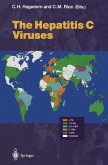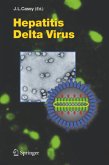Since the discovery of Australia antigen and its association with type B hepatitis, molecular characterization of the components making up hepatitis B virus (RBV) have been pursued with worldwide interest. Over the past two decades, such characterization has led to the development of sensitive assays to screen and exclude contaminated units from blood banks and has recently resulted in the licensing of several RBV vaccines. That more than 200 million people worldwide are chronically infected with RBV, and that they are at a high risk for the development of chronic hepatitis and hepatocellular carcinoma, still represent formidable problems in our understanding of host-virus relationships on the molecular level. In the absence of a suitable tissue culture system, and with a very limited host range of infection, characterization of RBV on the molecular level has made remarkable progress recently with the advent of genome cloning, sequencing and expression of individual virus genes by recombinant DNA technology. The presence of hepatitis B-like viruses in an expanding number of animal hosts, and the possibility of virus replication in cells other than hepatocytes, provide great promise that future work will elucidate the molecular mechanisms operative in the various outcomes of RBV infection.








